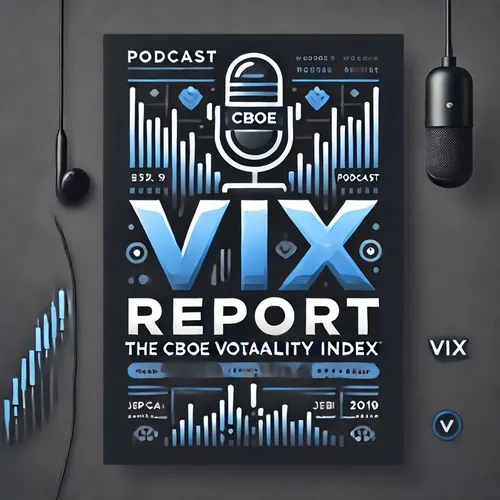"Volatility Index Dips Signaling Investor Confidence in Market Stability"
- Author
- QP-1
- Published
- Tue 22 Jul 2025
- Episode Link
- https://www.spreaker.com/episode/volatility-index-dips-signaling-investor-confidence-in-market-stability--67067767
The Cboe Volatility Index, or VIX, often referred to as the "fear gauge" of the US equity markets, is currently quoted at 16.41. This represents a decrease of 0.67% compared to the previous trading day's close of 16.52, according to the latest numbers for July 21, 2025.
The VIX reflects market participants’ expectations of near-term volatility, derived from S&P 500 index option prices. This most recent drop continues a theme seen in recent sessions, with the index easing from levels seen earlier last week. Over the last few days, VIX values have moved from a peak above 17 in mid-July to the current level, echoing reduced anxiety in the markets.
This percent change—a modest move lower of 0.67%—suggests that traders are perceiving slightly less uncertainty about the market’s immediate future. Recent economic data, moderately positive earnings reports, and the absence of new headlines driving major risk have all contributed to the more muted volatility outlook. Furthermore, despite some sector rotation and ongoing geopolitical concerns, the overall equity market has shown resilience, keeping the volatility index in check.
Looking back, the VIX has seen sharp but brief spikes in response to macroeconomic headlines, but it has generally returned to a range between 15 and 17, indicating that, while surprises still happen, the underlying expectation is of continued market stability. Current trends imply that the market is not expecting dramatic swings in the near term.
Experts commonly interpret a VIX reading in the mid-teens as signaling complacency or confidence among investors. As the summer continues, market participants are watching for signals from upcoming corporate earnings, Federal Reserve communications, and key economic releases that could change this sentiment.
Thanks for tuning in. Be sure to come back next week for more updates on the markets. This has been a Quiet Please production, and for more, check out Quiet Please Dot A I.
For more http://www.quietplease.ai
Get the best deals https://amzn.to/3ODvOta
